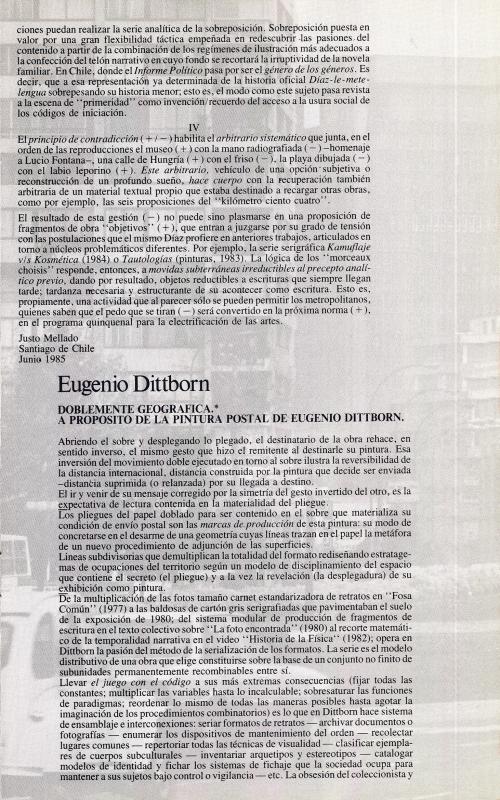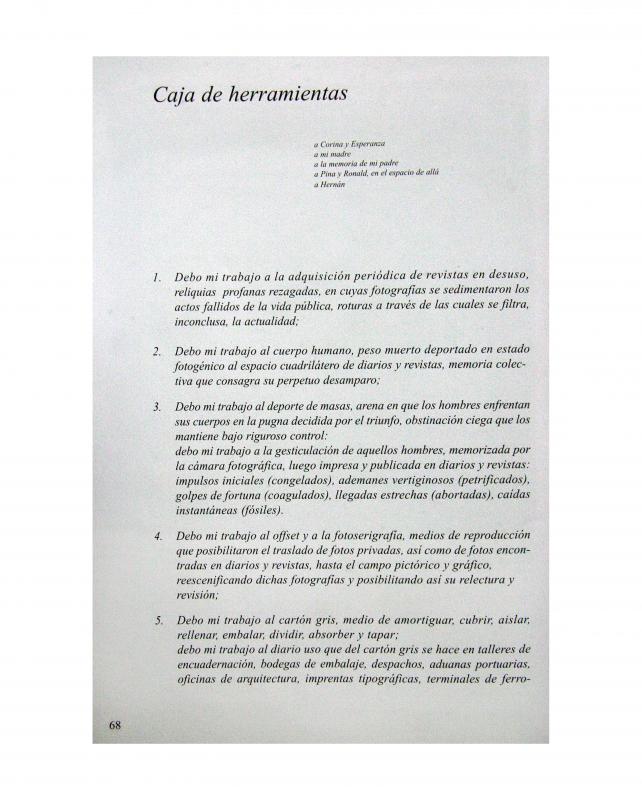The text “Cuatro alcances” by Eugenio Dittborn (b. 1943) was among the materials from the seminar Arte en Chile desde 1973. Escena de Avanzada y sociedad published by the Facultad Latinoamericana de Ciencias Sociales (FLACSO), Galería Visuala, and edited by Francisco Zegers. The seminar was inspired by the publication—in Australia (1986)—of Margins and Institutions. Art in Chile Since 1973, the book by cultural critic Nelly Richard (b. 1948); it included artists from the Escena de Avanzada and a number of writers, theorists, philosophers, artists, and social scientists who were closely involved in that process. The texts that were collected and published in Documento no. 46 addressed the “discussion about avant-garde Chilean art after 1973,” as noted in the introduction to the publication, and sought to provide material for analysis and discussion about the relationship between art and society in Chile.
Escena de Avanzada was the name that Nelly Richard coined to refer to a number of neo-avant-garde artists and practices that challenged art, its forms of production, and its context in a country governed by a military dictatorship. The movement came to represent the progressive “scene” of an unofficial art that sought to foster both a critical awareness and a commitment to resistance. The main art practices of the time therefore focused on works that could challenge the dominant culture’s artistic discourse. Dittborn was one of the artists that Richard reviewed. Her interest in his work centered on his photography, memory, history, and quotes, and the way he sought to challenge painting itself as well as painting traditions, production processes, and subject matter. In Richard’s opinion, that meant confronting the gestural aspect of painting and exploring the graphic technologies that could be used to produce serial images. [For more information on another text by Richard about this artist, see the following in the ICAA Digital Archive: “Delachilenapintura, historia, recorrido” (doc. no. 732195); see also the following text by Dittborn, “Doblemente geográfico. A propósito de la pintura postal” (doc. no. 734740).]
In addition to producing a complex body of work, Dittborn also explored these ideas at a theoretical level [see texts such as: “Caja de herramientas” (doc. no. 732125) and “Fallo fotográfico” (doc. no. 729801), both by the artist]. He also worked with the theorist Ronald Kay (1941–2017) to develop a reading of photography from a Latin American perspective that was published in the book Del espacio de acá. Señales para una mirada americana (1980).


